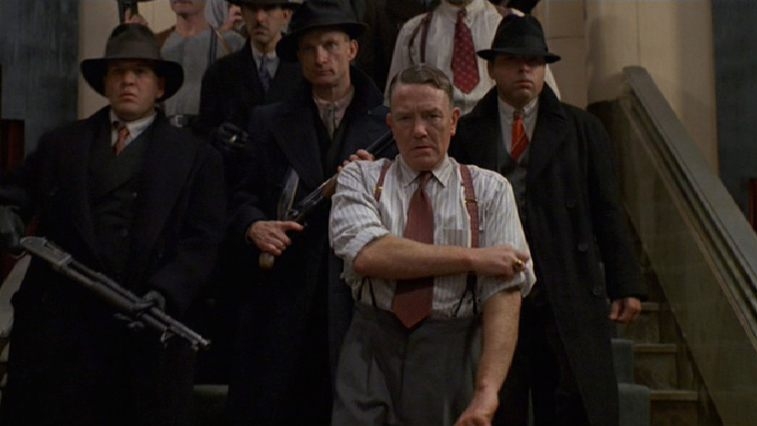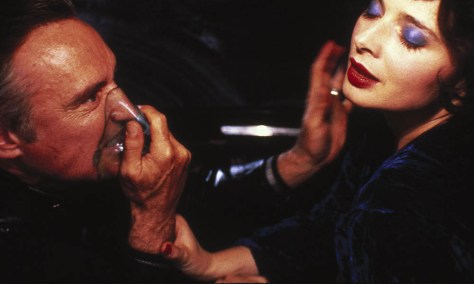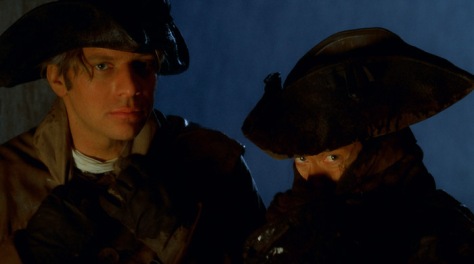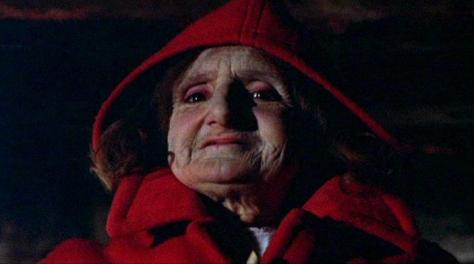By Dennis Hartley
(Originally posted on Digby’s Hullabaloo on March 2, 2019)

Well, this is it. 2019-last chance to celebrate a “50th anniversary” from the 60s (did I just detect a mass sigh of relief from all the Generation X and Millennial readers out there?).
2019 also marks the 50th anniversary of Woodstock…so you eye-rolling hipsters best batten down the hatches and prepare for a surge of tie-tied, acid-fried, and dewy-eyed peace love ‘n’ dope c’mon people now smile on your brother everybody get together try to love one another right now dirty filthy hippies wallowing in the mud nostalgia…MAN.
In my 2009 review of the Ang Lee film Taking Woodstock, I wrote:
“If you can remember anything about the sixties, you weren’t really there”. Don’t you hate it when some lazy-ass critic/wannabe sociopolitical commentator trots out that old chestnut to preface some pompous “think piece” about the Woodstock Generation?
God, I hate that.
But I think it was Paul Kantner of the Jefferson Airplane who once said: “If you remember anything about the sixties, you weren’t really there.” Or it could have been Robin Williams, or Timothy Leary. Of course, the irony is that whoever did say it originally, probably can’t really remember if they were in fact the person who said it first.
You see, memory is a funny thing. Let’s take the summer of 1969, for example. Here’s how Bryan Adams remembers it:
That summer seemed to last forever
And if I had the choice
Yeah, I’d always wanna be there
Those were the best days of my life.Best days of his life. OK, cool. Of course, he wrote that song in 1984. He’d had a little time to sentimentalize events. Now, here’s how Iggy Stooge describes that magic time:
Well it’s 1969 okay.
We’ve got a war across the USA.
There’s nothing here for me and you.
We’re just sitting here with nothing to do.Iggy actually wrote and released that song in the year 1969. So which of these two gentlemen were really “there”, so to speak?
“Well Dennis,” you may be thinking (while glancing at your watch) “…that’s all fine and dandy, but doesn’t the title of this review indicate that the subject at hand is Ang Lee’s new film, Taking Woodstock? Shouldn’t you be quoting Joni Mitchell instead?”
Patience, Grasshopper. Here’s how Joni Mitchell “remembers” Woodstock:
By the time we got to Woodstock
We were half a million strong
And everywhere there was song and celebration.She wrote that in 1969. But here’s the rub: she wasn’t really there.
There was a point in there, somewhere. Somehow it made sense when I was peaking on the ‘shrooms about an hour ago. Oh, I’m supposed to be writing a movie review. Far out, man.
Now it’s been 10 years since I wrote that piece regarding Woodstock’s 40th anniversary, so I’ve had some additional time to smoke a couple of bowls and further reflect on what my point was. After careful consideration, I believe it was: “You had to BE there, man!”
Am I getting through to you, Mr. Beale?
Anyhoo, going on the assumption that the next best thing to “being there” would be immersing yourself in the music of the era, I thought I’d mosey over to my record closet-where I hope to pluck some dusty jewels for your consideration. To wit-my picks for the top 10 most essential albums of 1969. As usual, my list is alphabetical-not ranking order.

Abbey Road – The Beatles
Let it Be (1970) may have officially been the Beatles’ “final” studio album, but as it was recorded several months before the band’s penultimate 1969 release, it is Abbey Road that truly represents John, Paul, George and Ringo’s swan song as creative collaborators.
Are there any other recording artists who have ever matched the creative growth that transpired over the scant six years that it took to evolve from the simplicity of Meet the Beatles to the sophistication of Abbey Road?
After a momentary lapse of reason to allow gifted but increasingly manic enfant terrible Phil Spector to (infamously) botch production for Let it Be, the Fabs wisely brought George Martin back on board. Martin, the band, and recording engineers Geoff Emerick, Phil McDonald and Alan Parsons are at the top of their game here (if you decide to pack it in, you might as well go out on top).
Choice cuts: “Come Together”, “Something”, “I Want You (She’s so Heavy)”, “Here Comes the Sun”, “Because” (my god, those harmonies), “You Never Give Me Your Money”, “Sun King”, and (of course) the remainder of that magnificent Side 2 “suite”.

Chicago Transit Authority – Chicago
While I’m not fond of their schmaltzy (if chart-topping) descent into “adult contemporary” territory from the 80s onward, there is no denying the groundbreaking nature of Chicago’s incredible first three double albums, beginning with this 1969 gem. The formula established here, which would continue through Chicago II and Chicago III (or what I like to call their “Roman Numeral Period”) was (for its time) a bold fusion of hard rock, blues, soul, jazz, and Latin styles, fueled by the late Terry Kath’s fiery guitar and accentuated by a tight horn section (and I’m not normally a big fan of horn sections).
Choice cuts: “Does Anybody Really Know What Time It Is?”, “Beginnings”, “Questions 67 and 68”, “Poem 58” (great Kath solo) and a cover of Steve Winwood’s “I’m a Man”.

Crosby, Still, & Nash – Crosby, Stills and Nash
One of rock’s most enduring “supergroups” sort of fell together (as the story goes) after an informal jam at a house party in 1968. The trio may have never reached consensus as to who played matchmaker for this seminal event (it vacillates between Joni Mitchell’s and Cass Elliot’s house), but millions of fans have since concurred that something sublime and greater than the sum of its parts occurs when David Crosby (originally from The Byrds), Stephen Stills (The Buffalo Springfield) and Graham Nash (The Hollies) sing three-part harmonies (occasionally joined by Neil Young…when they’re not fighting). Their flawless debut LP has stood the test of time.
Choice cuts: All of them!

Five Leaves Left – Nick Drake
Look in the dictionary under “melancholy” and you’ll likely find a picture of Nick Drake.
When the day is done, when the night is cold
Some get by but some get old
Just to show life’s not made of gold
When the night is cold
When the night is cold, I like to cozy up with a good pair of headphones, a cup of chamomile, and a Nick Drake album. Yes, his music was melancholy (and likely to blame for inspiring “emo”) but it was also beautiful; spare, haunting, unforgettable. He died much too young. If you’ve never had the pleasure, this debut is a fine place to start.
Choice cuts: “Time Has Told Me”, “Three Hours”, “River Man”, “Day Is Done”, “The Thoughts of Mary Jane”, “Fruit Tree”, and “Man in a Shed”.

Hot Buttered Soul – Isaac Hayes
Singer-songwriter-musician-producer-arranger extraordinaire Isaac Hayes’ second album is, in a word, epic. Containing only 4 songs, it blew a lot of minds and set a new bar for soul music.
Before recording sessions commenced, Hayes demanded, and received full creative control from Stax Records (who I’d speculate were chagrined that there were no potential singles to mine from 4 tracks…at least not without extensive editing). I suspect Stevie Wonder and Marvin Gaye were paying close attention, as they would make a similar push for creative independence with execs at Motown several years later.
Choice cuts: Hayes’ impeccably produced cover of Burt Bacharach and Hal David’s “Walk on By” is a 12-minute master class in song arranging and may very well be the inception of the “slow jam” that artists like Barry White would later build their entire careers on.
But the truly groundbreaking cut here is Hayes’ 18-minute deconstruction of Jimmy Webb’s “By The Time I Get To Phoenix”. He takes Webb’s 2-minute pop song and turns it into a cinematic tone poem, with a 9-minute spoken word preface that adds poignant backstory to the protagonist’s already heartbreaking narrative.

In the Court of the Crimson King – King Crimson
It’s safe to say there was nothing else that sounded quite like this seminal prog-rock masterpiece in 1969.
Led by avant-garde guitarist/producer Robert Fripp, the group featured vocalist/bassist Greg Lake (who would later hook up with Keith Emerson and Carl Palmer to form you-know-who), keyboardist/woodwind/sax player Ian McDonald (later of Foreigner), percussionist Michael Giles, and lyricist Peter Sinfield (also cryptically credited for “illumination”…their dealer, maybe?).
Many iterations of the band have followed over the years (with Fripp as the mainstay), but this remains my favorite conglomeration of personnel. Lake (with his cathedral pipes) was their finest vocalist.
Choice cuts: Pretty much all of them…from the startling proto-metal/jazz fusion opener “21st Century Schizoid Man” to the dreamy “I Talk to the Wind”, the melancholic cautionary tale “Epitaph”, ethereally beautiful “Moonchild”, to the album’s appropriately magisterial closer “In The Court of the Crimson King.”

Led Zeppelin II – Led Zeppelin
Despite legions of loyal fans (the author of this post among them) and the countless musicians they have inspired and influenced over the past 50 years, there’s just something about these seminal English rockers what really pisses off snooty music critics.
As an out and proud middlebrow, I’ll call this a “classic” without reservation. It was tough choosing this or their very strong debut album, which was also released in 1969. I could have cheated and just counted them both as one choice (which would have made my list “go to eleven”) but I’ve got principles (stop snickering).
Led Zeppelin’s unique blend of Delta blues, English folk, heavy metal riffing and (on subsequent albums, beginning with Led Zeppelin III) Eastern music has been oft-imitated but seldom matched… inviting us to tune in, buckle up, and ride a sonic roller coaster that takes you (as Jimmy Page described it) “from the whisper…to the thunder”.
Choice cuts: “Whole Lotta Love”, “What is and What Never Should Be”, “Thank You”, “Heartbreaker”, “Livin’ Lovin’ Maid” and “Ramble On” (best “wanderlust” song ever).

The Stooges – The Stooges
Well it’s 1969 okay
All across the USA
It’s another year for me and you
Another year with nothing to do
Last year I was 21
I didn’t have a lot of fun
And now I’m gonna be 22
I say oh my and a boo hoo
They sure don’t write ‘em like that anymore. The composer is one Mr. James Osterberg, best known by his show biz nom de plume, Iggy Pop. Did you know that this economical lyric style was inspired by Buffalo Bob…who used to encourage Howdy Doody’s followers to limit fan letters and postcards to “25 words or less”? True story.
The peace ‘n’ love ethos was still lingering when Iggy and the Stooges stormed straight outta Detroit with their aggressive proto-punk sound, undoubtedly scaring the shit out of a lot of hippies.
While this debut album didn’t exactly go storming up the charts upon initial release, it is now acknowledged as a profound influence on punk’s first wave (the Sex Pistols paid homage on Never Mind the Bollocks with their sneering cover of “No Fun”).
Choice cuts: “1969”, “I Wanna Be Your Dog”, “No Fun”, and “Real Cool Time”.

Then Play On – Fleetwood Mac
I’ve got nothing personal against Stevie Nicks and Lindsay Buckingham; they are obviously very talented folks in their own write, but…as far as I’m concerned, Fleetwood Mac “Classic” died the day they joined up with Christine McVie and stalwart founding members Mick Fleetwood and John McVie. This 1969 release is my favorite Mac album.
Guitarist and lead vocalist Peter Green would depart the band following this release (briefly rejoining later for a few live dates), but it features some of his finest work. The bulk of the songs for this outing were written by Green and newly acquired guitarist/vocalist Danny Kirwin (a gifted player and songwriter who would stay on board until some unfortunate personal issues forced him out in 1972). Very bluesy; those who prefer the more pop-oriented Buckingham-Nicks iteration may not find much to relate to.
Choice cuts: “Coming Your Way”, “Closing My Eyes”, “Underway”, “Although the Sun is Shining”, “My Dream” (gorgeous Kirwin instrumental),“Before the Beginning” and the classic “Oh Well”.

Tommy – The Who
There was a time (a long, long, time ago) when some of my friends insisted that the best way to appreciate The Who’s legendary rock opera was to turn off the lamps, light a candle, drop a tab of acid and listen to all four sides with a good pair of cans. I never got around to making those precise arrangements, but I’m always up for spinning all four sides. Not only one of 1969’s finest offerings, but one of the best rock albums of all time.
Choice cuts: “1921”, “Amazing Journey”, “Acid Queen”, “Pinball Wizard”, “Tommy Can You Hear Me?”, “I’m Free”, and “We’re Not Gonna Take It”.
Bonus tracks!

10 more 1969 releases worth a spin:
Beck-Ola – Jeff Beck
Blind Faith – Blind Faith
Everybody Knows This Is Nowhere – Neil Young & Crazyhorse
It’s a Beautiful Day – It’s a Beautiful Day
Kick Out the Jams – The MC5
Santana – Santana
Stand Up – Jethro Tull
Stand! – Sly & the Family Stone
Tons of Sobs – Free
Trout Mask Replica – Captain Beefheart













































































